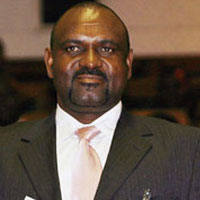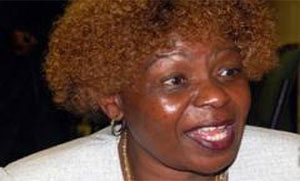‘Astrobiology’ ready to rock the market
Publisher: Hoaxwell Enterprises (Pvt) Ltd
Daunting Issues (2010) is a book written by Alois Nyandoro and has the potential to capture the imagination of the Zimbabwean readership.
The book is made up of 7 chapters which, are divided into three parts that address themes ranging from Astronomy, Astrobiology, Physics, Geology, Geography, History, Philosophy and Religion.
In Chapter 1 Nyandoro considers the solar system to be one of the daunting issues and portrays man in a state of bewilderment because of the nature of the universe. As the author puts it, man has asked a plethora of questions in order to understand the universe and some of these questions are; What is the universe?
Where does the universe come from? Where is it going? Man has also asked his place in the universe. He has often asked questions like: Who am I? Where do I come from? Is life meaningful? Is the world just? Is there life after death? These are serious philosophical questions that require critical reflection and have prompted man to explore the universe. Socrates, one of the greatest philosophers to emerge in history says:
The unexamined life is not worth living. This is also the spirit in which the book is written.
In Chapter 2 of part 1, the author grapples with the issue of whether or not planet earth contains life. He brings to the fore critical debates some of which point to the fact that if life arose on earth because of prevailing biological conditions, then similar life in the universe should also be found on planets having biological conditions similar to the ones on earth.
In a bid to discover such planets, studies commenced in a new discipline that combined astronomy and biology and this gave birth to a discipline called Astrobiology. While the generality of the people were keen to know whether the earth and other planets contained life, Christians wanted to know whether the devil was found in those planets and whether or not Jesus Christ had to intervene and save his people. The rest of the chapter outlines methodologies in the study of the universe with particular emphasis on life in the solar system.
In Chapters 3 to 8 of part 1, the author discusses the nature and composition of the solar system. He begins with observational astronomy and ends with observation and effects. The chapters look at the methods employed by astronomers to discover the planets that make up the solar system, types of and character of astronomical work in the universe and the issues and problems that arise in the struggle to understand the universe.
The chapters are written in such a way that even a lay person is able to follow. The author tries as much as possible to use simple English that is a strong weapon in academic writing. In chapter 10 of part 1, the author discusses the origins of matter with a clear focus on natural laws that lead to the creation of matter in the universe, the laws of conservation of change, mass, energy and relativistic momentum.
The interplay between science and religion is also shown. The Big Bang theory, which is a scientific theory, is said to have both theological and philosophical implications.
For instance, theologians and philosophers have complained that the beginning of time implied by the theory imported religious concepts into physics. This chapter shows that science cannot be left alone to solve
the problems of this world as it provides half the story. This chapter is useful for students at colleges and universities whose task is to critically understand the universe with its various forms and material facets. Those – like me – whose job is to think, think and improve the world that we live in. Chapters 1 and 2 of part 2, show how the earth emerged. The Solar system (including the Earth), it is argued, formed from a large, rotating cloud of intercellular dust and gas called the solar nebula that formed from the Big Bang.
The author also outlines and discusses the theory of plate tectonics as found in Geography to show that the lithospheric motions of the earth led to the formation of continents and the existence of life. Chapters 5 to 9 of part 2, show how man originated on earth, his place and how he makes sense of the world in which he is found.
Chapters 10 to 12 of part 2, provide both scientific and theological explanations of the spirit world with the former replacing the word spirit or soul with aura.
Aura, just like spirit or soul, cannot be seen by the normal eye nor can it be apprehended by the normal mind. While for most people the aura or soul is the radiance of human beings, for scientists it is a concrete, existing field around living creatures.
While the aura is only restricted to the world of matter, the soul or spirit in the theological sense transcend the material world and the author identifies three states that the soul passes through after death before entering its final destination.
This is a pure work of metaphysics as pioneered by the Greek philosophers such as Aristotle. The first state is the state of the soul leaving and when it is just outside the body. The second is the state of the soul completely outside the body and the third is the state of preparation for its final destination. These three states are states in the world of the spirits. God is invoked to be the author of creation that includes the earth and the various beings that populate it.
This is a solid and compact book written with the proper academic register.
Dr Fainos Mangena-Janhi is a Senior Lecturer in the Department of Religious Studies, Classics and Philosophy, University of Zimbabwe and a Research Fellow in Leadership Ethics at the Centre for Leadership
Ethics in Africa, University of Fort Hare (South Africa) as well as a winner of the prestigious AHP Post-Doctoral Fellowship of the American Council of Learned Societies. He is also an Applied Ethicist and a Business Ethics specialist/consultant and a journalist. He can be contacted at [email protected] or [email protected].











Comments